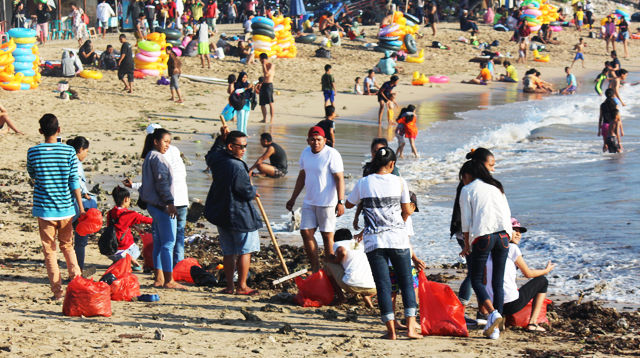- OUR oceans are the lifeblood of Earth, providing us with oxygen, food, and climate regulation. Yet, they are drowning in a sea of plastic and pollution. The consequences are dire–marine life entangled in debris, pristine coastlines tarnished, and fragile ecosystems pushed to the brink.
Beach clean-up refers to the organized effort of volunteers or organizations to remove litter, debris, and other pollutants from beaches and coastal areas. It is a proactive and community-driven approach to environmental conservation that aims to protect marine ecosystems, preserve natural beauty, and promote awareness about the impacts of pollution.
Here’s some more information about beach clean-up initiatives:
Importance of Beach Clean-Up:
- Marine Ecosystem Protection: Beaches and coastal areas are vital ecosystems that support a diverse range of marine life. Litter and debris can pose significant threats to these ecosystems by entangling marine animals, disrupting habitats, and introducing harmful substances into the water.
- Preventing Pollution: Beach clean-ups help prevent pollution from entering the oceans. Plastics and other non-biodegradable materials, when left unattended, can break down into microplastics that enter the food chain and have detrimental effects on marine life and human health.
- Promoting Awareness: Clean-up events raise awareness about the environmental impact of pollution and encourage individuals and communities to adopt more responsible waste disposal practices.
- Community Engagement: Beach clean-ups foster a sense of community involvement and environmental stewardship. People come together to make a positive difference in their local environment.
How Beach Clean-Up Works:
- Organizing: Local organizations, environmental groups, schools, businesses, or concerned citizens often initiate beach clean-up events. They coordinate logistics, such as date, time, location, and supplies needed.
- Volunteer Participation: Individuals of all ages and backgrounds are encouraged to participate as volunteers. Clean-up events are open to anyone interested in contributing to a cleaner environment.
- Supplies: Participants are often provided with gloves, trash bags, and sometimes even specific tools like litter pickers. These supplies ensure safety and make it easier to collect and handle trash.
- Collection and Sorting: Volunteers walk along the beach, picking up litter and debris. The collected waste is sorted into categories such as plastics, glass, metals, and organic materials. This sorting helps with proper disposal and recycling.
- Environmental Data: Some clean-up initiatives collect data on the types and quantities of waste collected. This data can be used for research, policy advocacy, and identifying trends in pollution.
- Disposal: The collected waste is usually disposed of responsibly through recycling, composting, or proper waste management facilities.
Tips for Effective Beach Clean-Up:
- Plan Ahead: Choose a suitable date, time, and location for the clean-up. Ensure participants are aware of the details.
- Safety First: Prioritize safety by providing protective gear, educating participants about potential hazards, and having a first aid kit on hand.
- Promote Awareness: Use social media, local news outlets, and community bulletin boards to spread the word about the clean-up event.
- Educational Component: Incorporate an educational component, such as discussions or presentations, to inform participants about the importance of reducing waste and its impact on marine life.
- Minimize Waste: Use reusable supplies whenever possible, and encourage participants to bring their own reusable water bottles and snacks.
Beach clean-up efforts play a crucial role in protecting coastal environments and raising awareness about the impact of pollution on marine ecosystems. By engaging communities and individuals in these initiatives, we can work together to ensure cleaner and healthier oceans for future generations.










